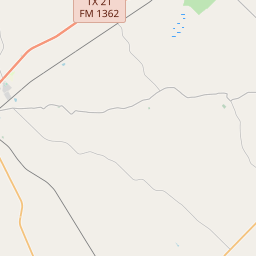New Tabor Cemetery







Graves: 841 (1888 to present)
Size: 4.44 acres
Source: GNIS; TxDoT; THC files; Parsons, Kim, Ref. to Texas Cemeteries, 1988
To address the problem of cemetery destruction and to record as many cemeteries as possible, the Texas Historical Commission offers the Historic Texas Cemetery designation.
The Historic Texas Cemetery designation was developed in 1998 to help protect historic cemeteries by recording cemetery boundaries in county deed records to alert present and future owners of land adjacent to the cemetery of its existence. Every county in Texas has at least one cemetery designated as a Historic Texas Cemetery through this program. The HTC designation is the first step toward preservation of a historic cemetery.
A cemetery is eligible for designation if it is at least 50 years old and is deemed worthy of recognition for its historical associations. The very nature of a cemetery being a landmark of a family’s or community’s presence is considered to validate the criteria of historical associations. Any individual, organization, or agency may submit a request for designation.
The world's first rodeo was held in Pecos, Texas in 1883. The event included bronco riding, calf roping, and bull riding.
During the Civil War, Burleson County saw its fair share of turmoil. Many of its residents enlisted in the Confederate Army, while others supported the Union. The county was occupied by Union troops for a short period, which caused further division among its residents.
In the late 19th century, the county experienced an economic boom with the expansion of the railroad. The arrival of the Houston and Texas Central Railway in the 1870s brought new opportunities for trade and commerce. Several communities, such as Caldwell and Snook, were established along the railroad routes and became important shipping centers for agricultural products.
Agriculture remained the backbone of the county's economy throughout the 20th century. Cotton, corn, and livestock farming were the mainstay of Burleson County's agricultural industry. The county also experienced growth in oil and gas production during the mid-20th century. In recent years, the county has diversified its economy with the growth of manufacturing and services sectors.
Today, Burleson County is a thriving community with a blend of rural charm and economic development. Its rich history is celebrated through various events and festivals, such as the Burleson County Czech Heritage Festival and the Caldwell Kolache Festival. The county's natural beauty, historic landmarks, and vibrant community make it a desirable place to live, work, and visit.
Burleson County Timeline
This timeline provides a concise overview of the key events in the history of Burleson County, Texas.
- 1841 - Burleson County is established as a part of the Republic of Texas
- 1851 - The county seat is established in Caldwell
- 1861-1865 - Burleson County residents actively participate in the American Civil War
- 1870s - The county experiences growth with the arrival of the Houston and Texas Central Railroad
- 1881 - A fire destroys many buildings in Caldwell
- 1903 - The Texas A&M Southwest Experiment Station is established in Burleson County
- 1930s - The Great Depression brings economic hardship to the county
- 1940 - Oil and gas discoveries bring some economic relief to Burleson County
- 1976 - The Burleson County Historical Society is formed
- 1990 - The population of Burleson County reaches its peak at over 21,000 residents
- 2000s - The county continues to focus on agricultural and oil industries while experiencing some population growth